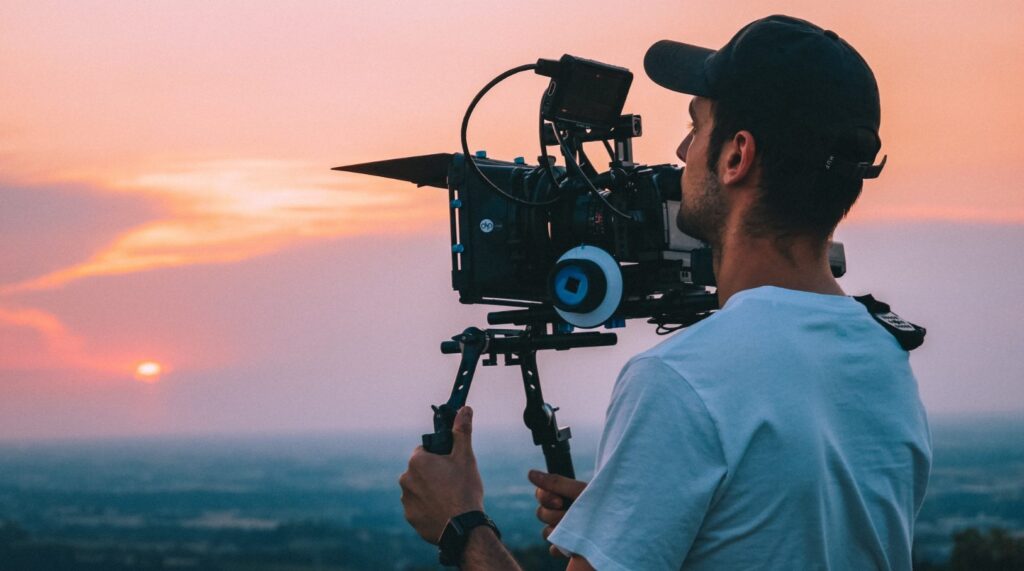Within the dynamic panorama of today’s advertising, logo films have emerged as powerful equipment for conveying narratives that resonate deeply with audiences. These visible stories transcend conventional advertising by engaging viewers on an emotional stage, fostering connections that bear past mere consumption. In Singapore, this phenomenon is mainly said, as brands vie for interest in a bustling marketplace defined with the aid of range and innovation. Central to the effectiveness of those brand movies is the artwork of cinematography techniques, the craft of taking pictures, not simply photos, but feelings and aspirations.
Cinematography becomes the canvas for painting logo narratives, with each lighting choice, camera perspective, and color grade contributing to the overarching message. In a crowded virtual landscape, manufacturers strive to differentiate themselves, highlighting the significance of professional cinematography techniques. In this exploration, we delve into the nuances of Commercial filmmaking techniques for brands, inspecting how those visual elements come together to create compelling tales that have an enduring effect on audiences in Singapore and the past.
The Role of Cinematography in Brand Storytelling
Cinematography serves as the spine of visible storytelling, transforming basic narratives into immersive reports. When manufacturers pick to inform their memories through films, the cinematographic picks are pivotal. These alternatives dictate the lighting, framing, and movement that collectively have an impact on how the story is perceived and felt by the audience.
Good cinematography can substantially decorate the message a brand needs to deliver. For instance, using heat, and smooth lights can evoke emotions of comfort and trust, best for corporate video Singapore brands aiming to appear approachable and reliable. Conversely, sharp contrasts and high saturation can energize visitors, aligning perfectly with brands that need to appear dynamic and modern.
Moreover, cinematography has the precise ability to attach to an emotional degree with viewers. This connection is carried out now not only via what is shown but also by how it is shown. The angle of a shot can dictate the positionality of the viewer within the narrative, making them a passive observer or a lively participant. Similarly, the tempo and rhythm of the movie’s modification can affect the emotional pace of the narrative, keeping the target market engaged and emotionally invested.
Key Cinematography Techniques for Brand Films
- Lighting: Lighting is one of the maximum influential factors of cinematography. It shapes the film’s temper and directs the target audience’s attention to where it’s far maximum impactful. For example, key lights highlight the product or character at the center of the emblem story, while backlighting adds depth and intrigue, elevating the visual narrative.
- Camera Angles and Movement: The desire for digicam angles and motion is pivotal in shaping the viewer’s dating with the content. An excessive perspective shot may make the concern seem susceptible or insignificant, which may be used efficaciously in a narrative about personal triumph. On the other hand, low-perspective shots can confer a feeling of strength and dominance, appropriate for a brand seeking to project authority and self-belief.
- Color Grading: This technique is essential in placing the overall tone of the movie. It involves adjusting the colors to achieve a selected visual fashion that complements the brand’s palette and enhances mood. For example, a brand associated with sustainability may opt for earth tones and gentle vegetables to subconsciously communicate its connection with nature.
Adapting Cinematic Techniques to Different Brand Messages
Cinematography isn’t always a one-size-fits-all approach, specifically for brand films. Each emblem has a unique voice and message, which must be pondered in the visual fashion of its films. The capacity to conform cinematic techniques to align with the logo’s message is vital for developing powerful and resonant content.
For product-orientated movies, the focal point often lies in highlighting the product’s features and benefits. Singapore production company moves that emphasize its capability. Service-orientated movies, however, generally tend to depend more on creating emotional connections with the target audience. This may be carried out via softer lights, slower digicam actions, and compositions that target human elements, successfully conveying the service’s effect on clients’ lives.
Moreover, the combination of those techniques requires deep information on the logo’s identification and desires. For instance, a luxury watch emblem in Singapore would possibly use fashionable sweeping shots and a refined shade palette to awaken a sense of class and greatness. In comparison, a startup tech corporation may opt for sharp cuts and a vibrant color scheme to carry innovation and electricity.
Challenges and Solutions in Brand Film Cinematography
Creating cinematographic content in Singapore gives precise challenges. The various and dense city environments, while visually stimulating, can also introduce realistic constraints which include space obstacles and variable lighting fixture situations. Additionally, the multicultural target market in Singapore demands careful consideration of cultural nuances to ensure the content is inclusive and tasty for all.
To deal with these challenges, filmmakers ought to be adept at problem-solving and innovation. Utilizing portable and flexible devices can mitigate space constraints, permitting cinematographers to capture extraordinary pictures in confined settings. When handling lighting fixture variability, advanced strategies including HDR (High Dynamic Range) imaging and using reflectors or diffusers can help maintain visual consistency.
Moreover, to authentically constitute Singapore’s cultural variety, filmmakers must behavior thorough studies and interact with cultural consultants. This guarantees that the visual representation is respectful and correct, averting stereotypes and embracing actual cultural expressions.
Incorporating Local Flavor in Cinematography
Singapore’s specific blend of today’s city landscapes and luxurious greenery provides a rich tapestry for filmmakers. Capturing this nearby flavor in emblem films now not only enhances the visible appeal but also strengthens the brand’s nearby identity, making it greater relatable to its target audience.
Cinematographers can harness Singapore’s iconic skyline, integrating its architectural marvels as a dynamic backdrop for urban-oriented brands. For brands that need to emphasize a near connection with nature and sustainability, incorporating scenes in settings like the Singapore Botanic Gardens or the various nature reserves can underline their commitment to environmental values.
Additionally, showcasing local festivals, traditional markets, and everyday scenes in neighborhoods can create a robust emotional bond with the target audience. It displays the brand’s integration into the nearby culture and its dedication to serving the community, enhancing emblem loyalty amongst neighborhood clients.
In conclusion, the sector of logo film cinematography in Singapore is not merely about adapting to the present but innovating for the future. By embracing new technologies, know-how of the nearby context, and constantly refining their techniques, cinematographers in Singapore can create compelling emblem films that aren’t only visually lovely but also deeply impactful. As we move ahead, the mixing of those elements will outline the achievement of emblem storytelling within the cinematic area, ensuring that brands not simplest tell their tales but also honestly interact with their audiences at a profound level.






